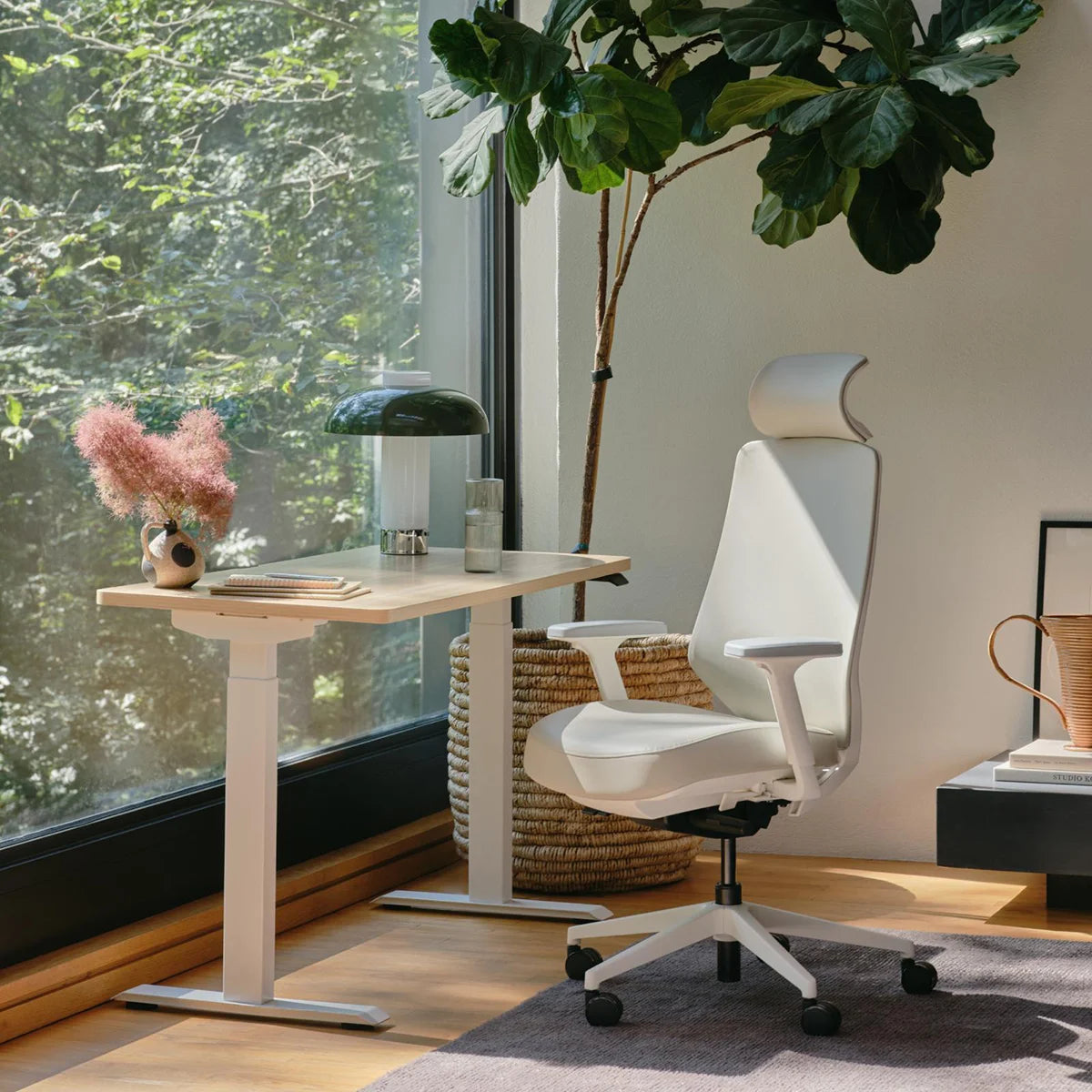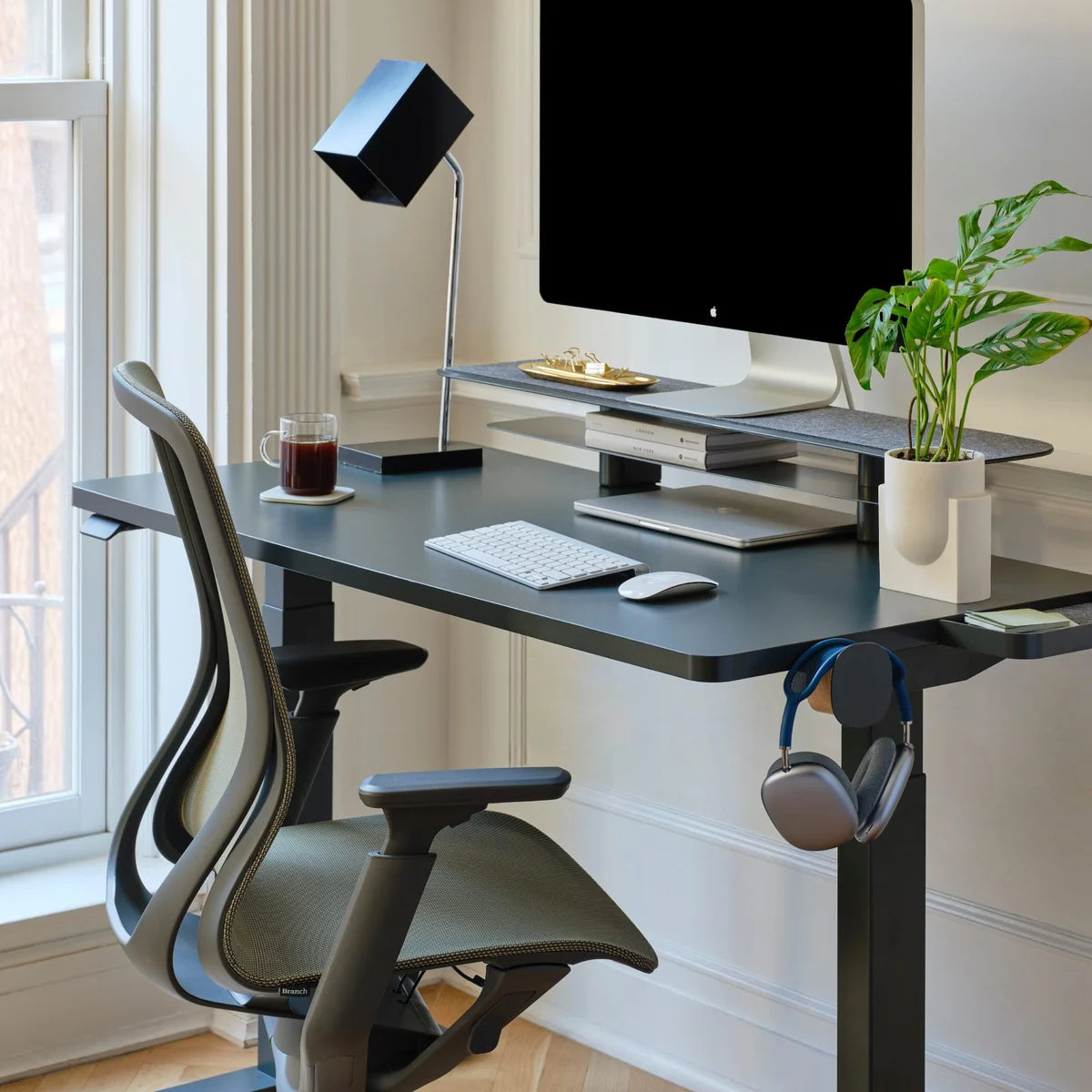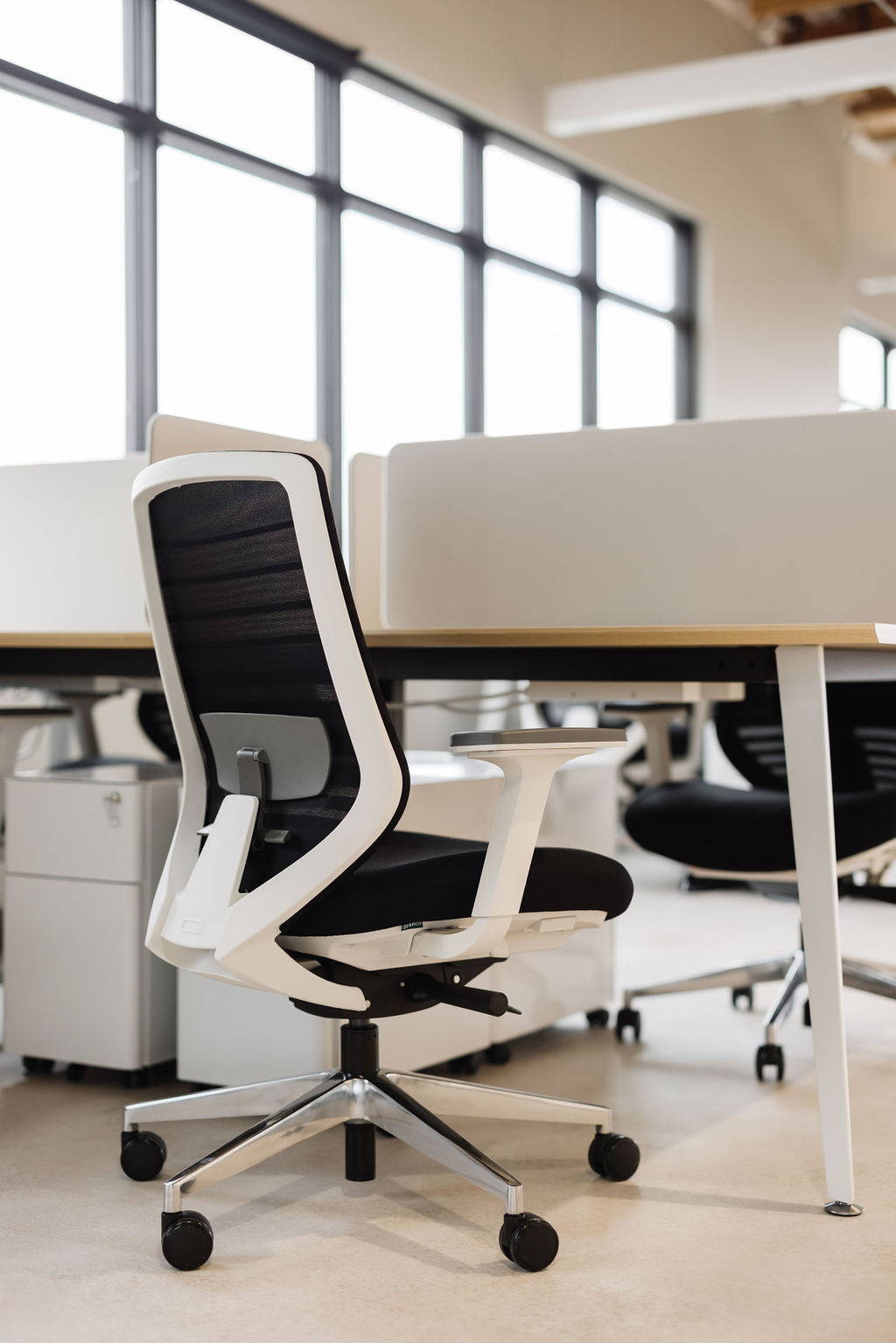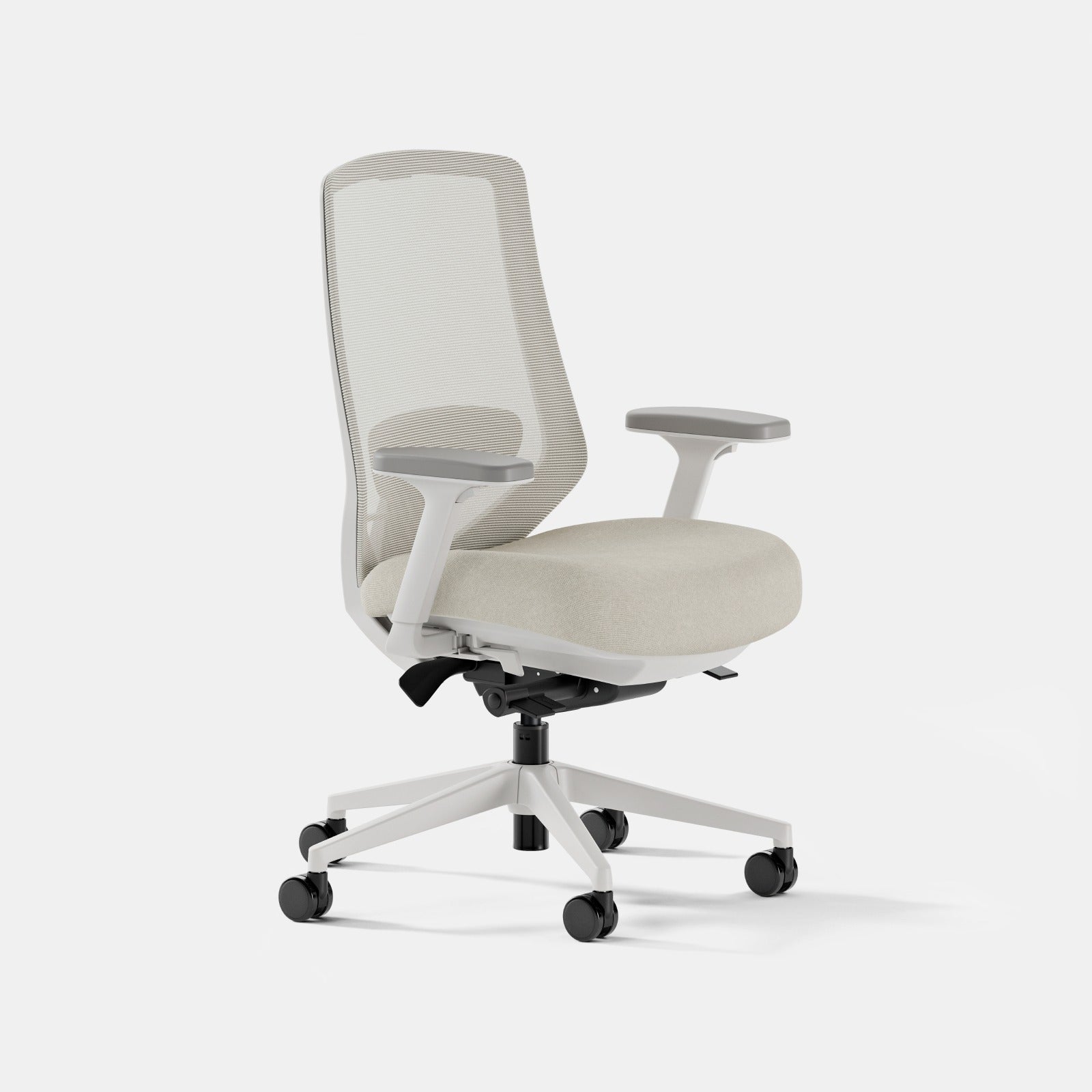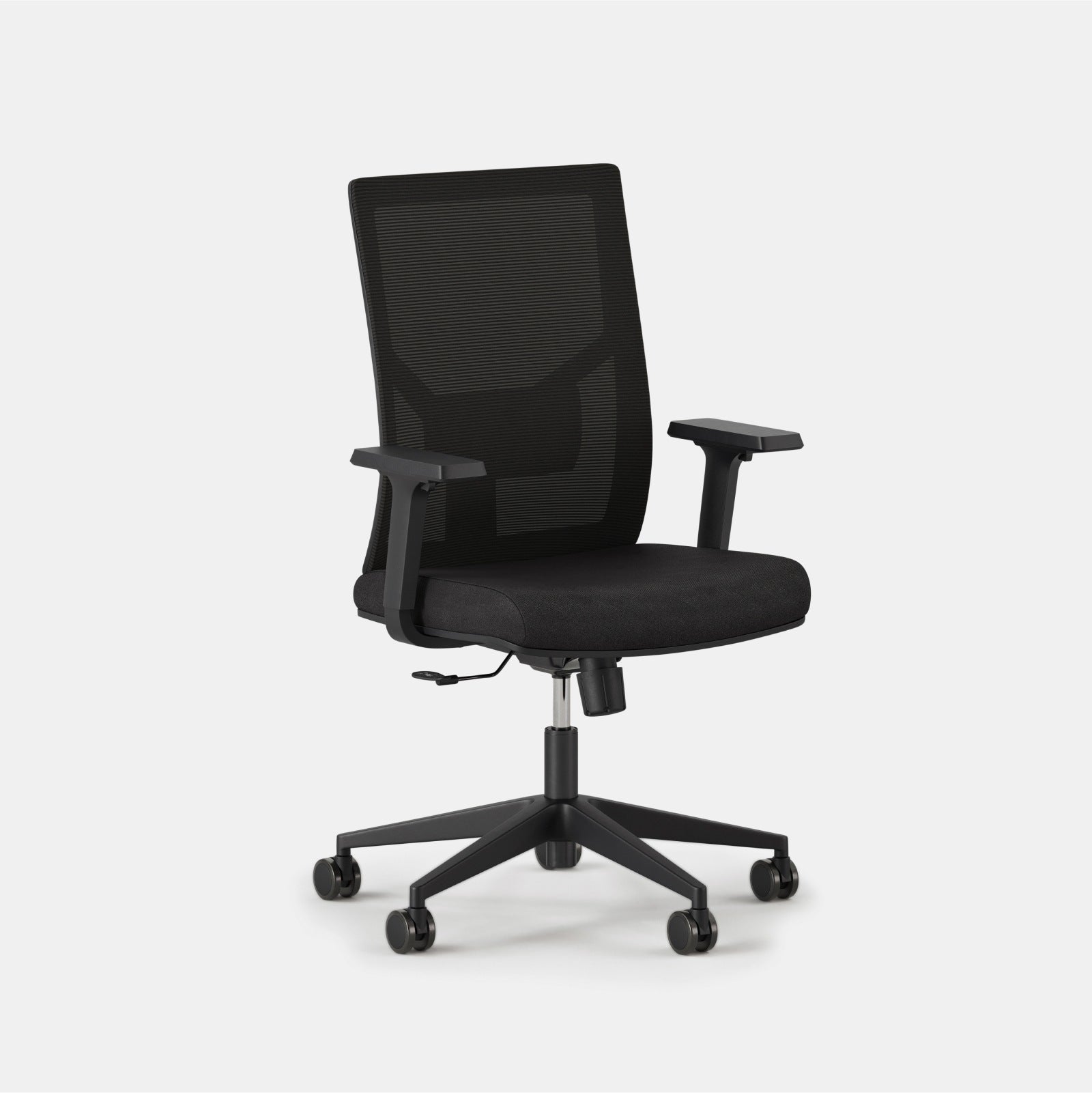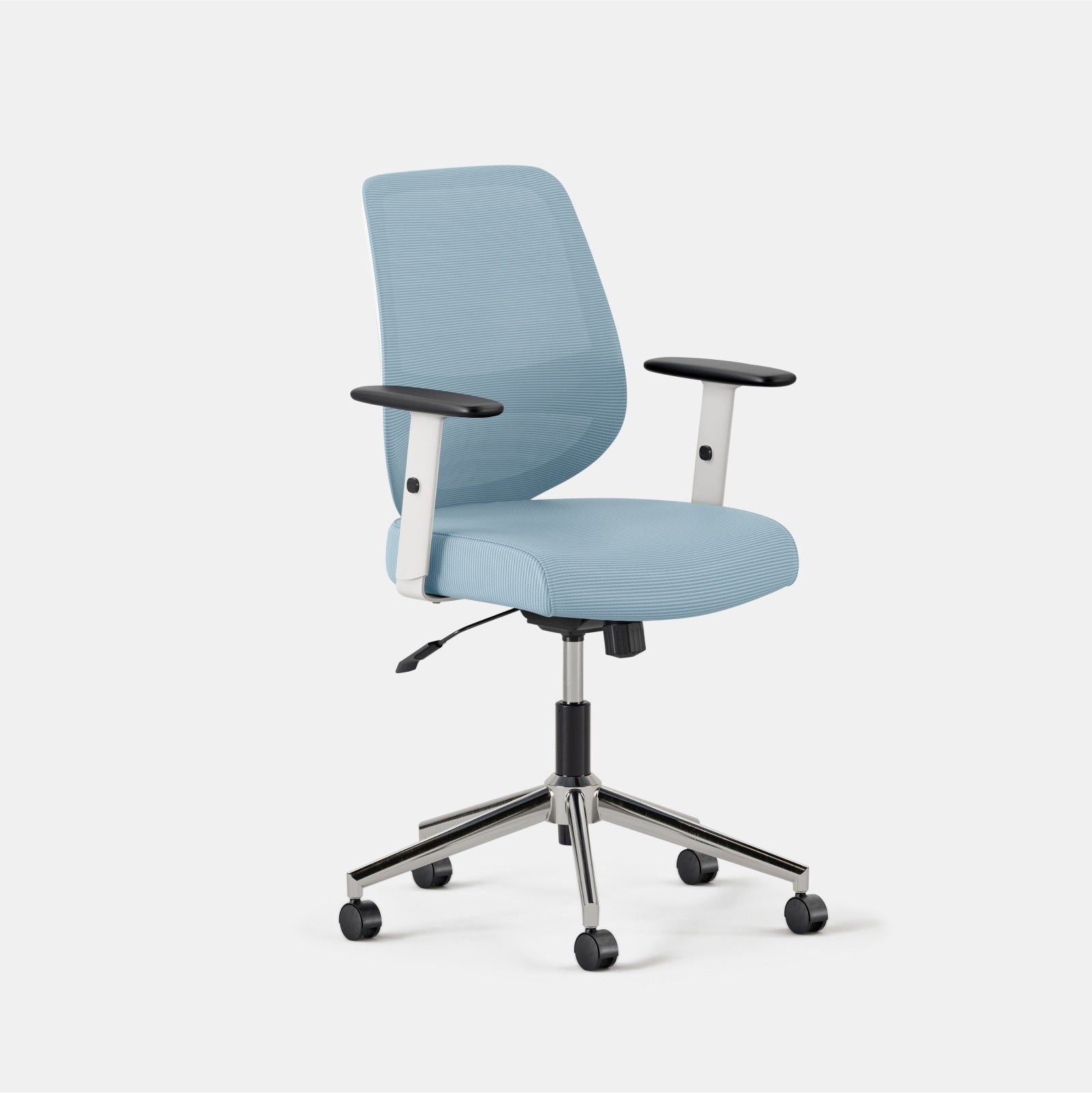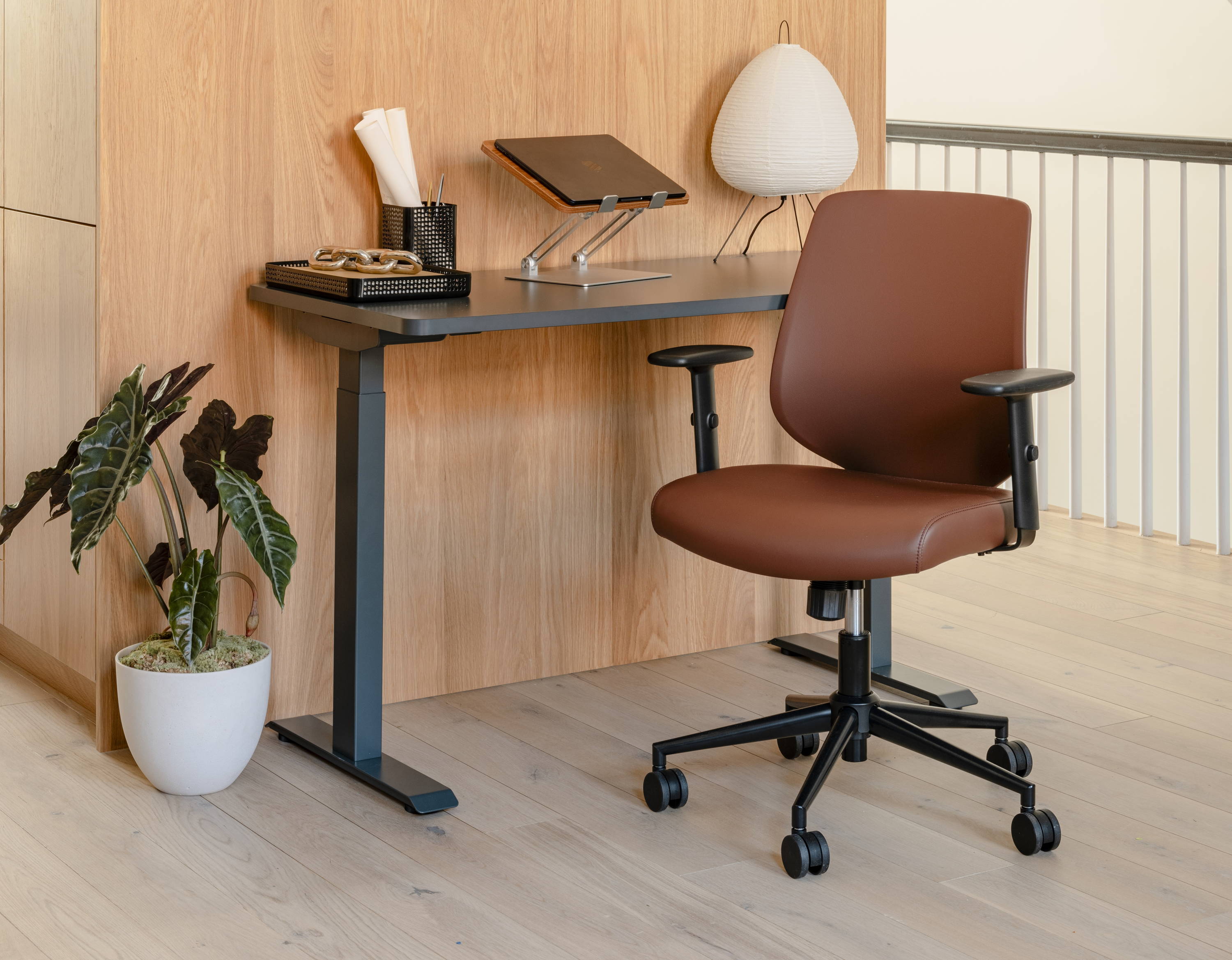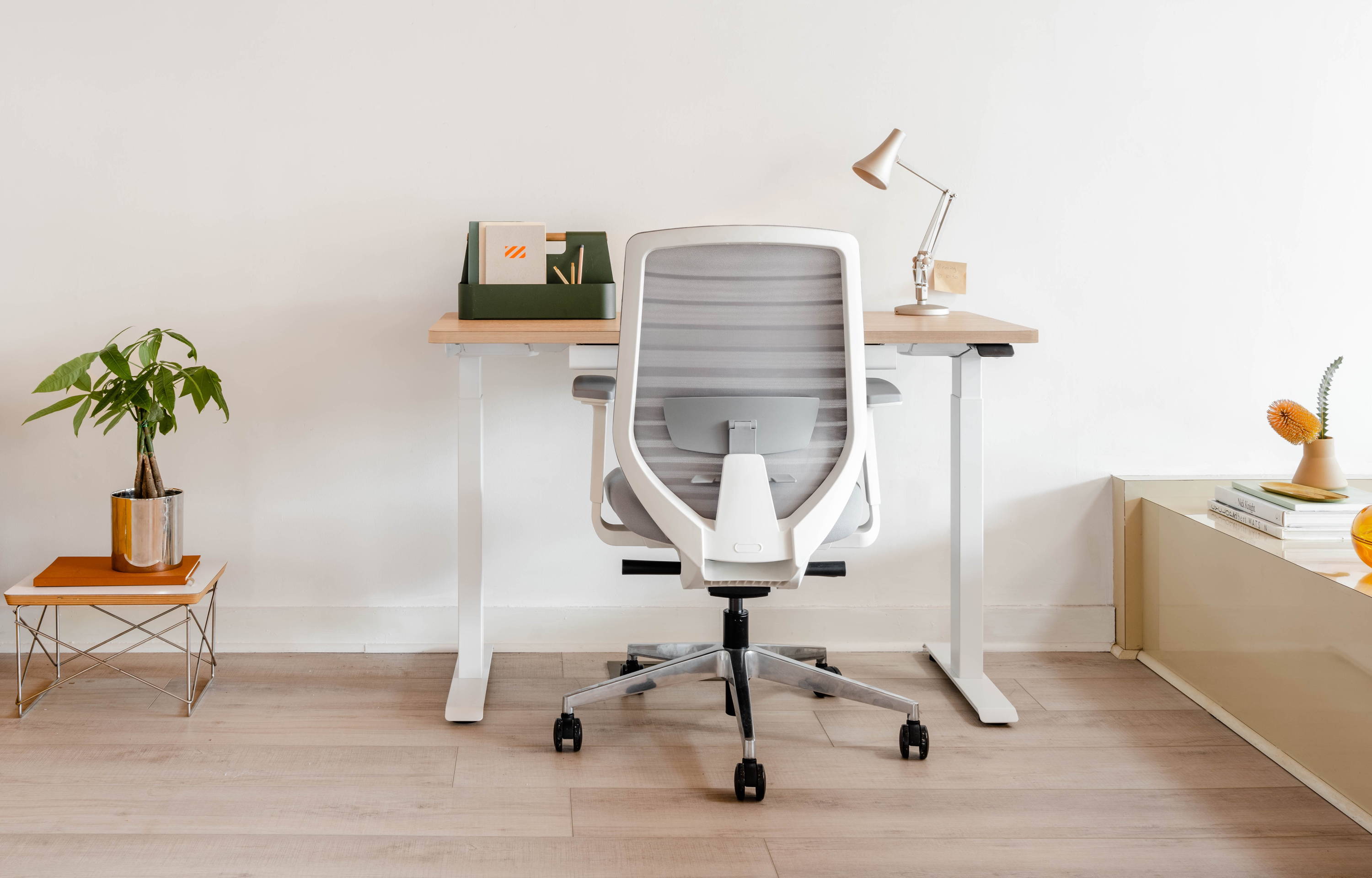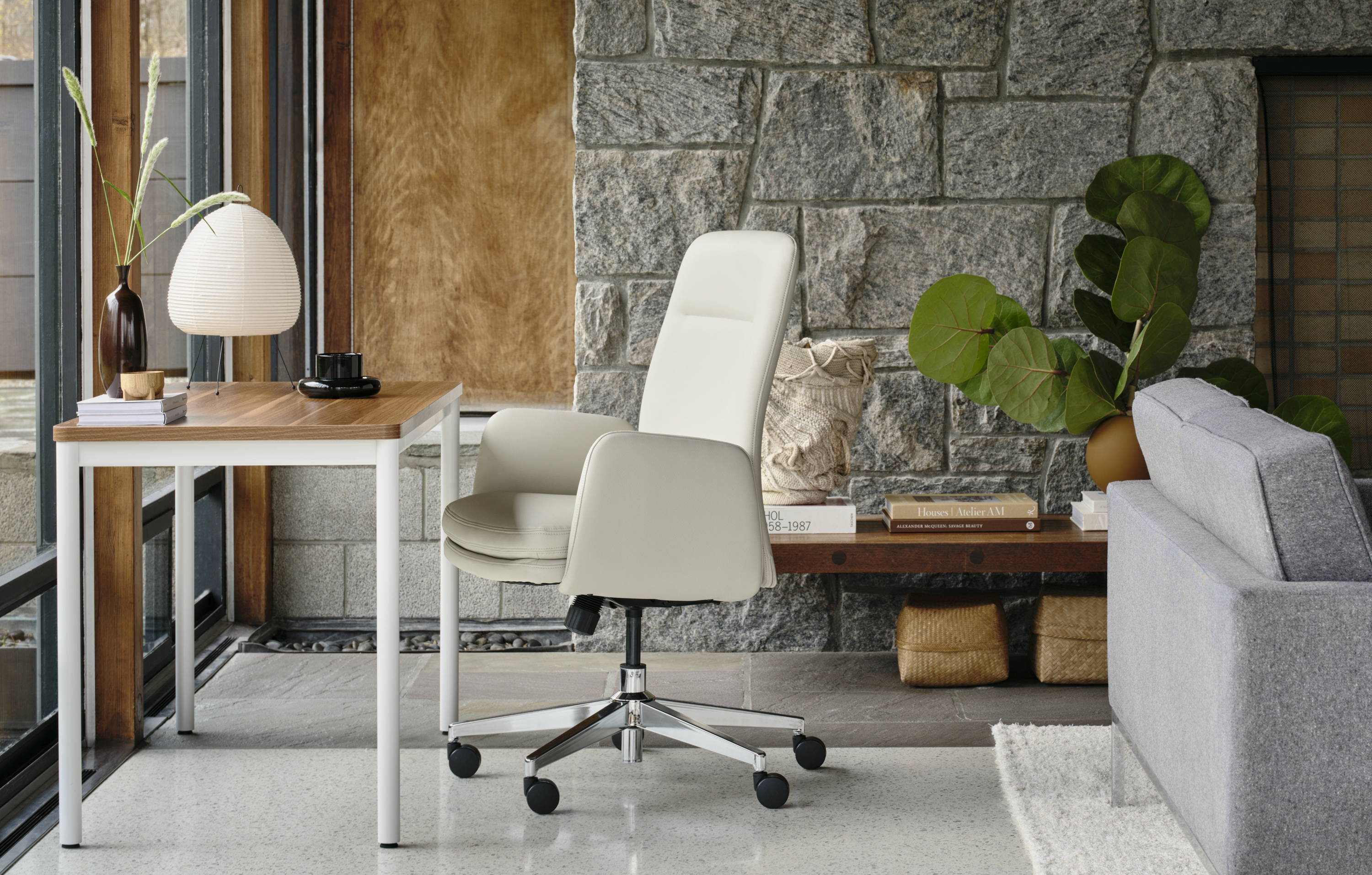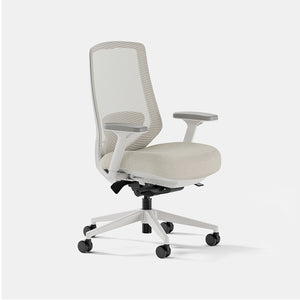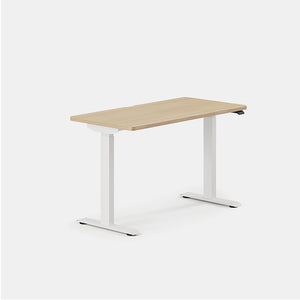Do you deal with back pain and an aching neck after a long day at your desk? You might need to update your ergonomic setup and ensure everything is at the right height for your body. Since many of us spend most of the day in an office chair, ergonomic chair height is one of the most critical factors to address.
The correct office chair height typically allows a sitting posture with your feet flat on the floor or a footrest and your knees around a 90-degree angle. And there’s more to it than just your seat height — an adjustable ergonomic office chair should allow you to customize areas like lumbar support, armrest height, and seat pan depth.
This guide will help you discover the right ergonomic office chair height for your body and work style. Get ready to fall in love with your desk chair and say goodbye to preventable back and neck pain.
Finding the Right Office Chair Height
Ergonomics is the science of fitting your workspace for the comfort and health of your body. Because each body is different, the best ergonomic chair height for your co-worker might not be the right fit for you.
Determining the right chair height for you comes down to your height, body type, and work style. For example, if you like to recline in your computer chair while reviewing documents, you’ll want a chair with an adjustable reclining feature. And, of course, people of different heights will need different height chairs for comfort.
Even if your chair doesn’t have numerous adjustment points, most are still height adjustable. Many people can adjust a standard office chair to the proper seat height with minimal (if any) modifications. As a rule, you want the seat height to sit just below your kneecap.
Here’s how to take your measurement:
- Sit on a chair that allows your legs to bend at or near a 90-degree angle with your feet flat on the floor.
- Use a measuring tape to measure the distance from the floor underneath your heel straight up to the bottom of your kneecap. Record this measurement.
- Double-check your measurement while standing, or ask a friend to help you.
This measurement is the best ergonomic chair height for your body — use it to adjust your seat cushion properly. When you sit in a chair adjusted to the correct height, your weight should feel evenly distributed on the cushion with your feet firmly on the floor. If you feel pressure near the front of the chair behind your knees, you may need to lower the seat height.
For Your Consideration: Other Points of Adjustment
Office chair height is just one part of proper chair ergonomics. The more points of adjustment your chair features, the better you can customize it to fit your body and posture problems.
If you want the best fit possible, you’ll also want to consider the following points of adjustment:
- Back support: Your office chair should feature lumbar support that sits in the natural curve of your lower back. The backrest should also support your upper back — a 110-degree tilt is usually ideal.
- Seat tilt: Your seat tilt helps with weight distribution and comfort. An angle of around five degrees works for most people.
- Seat depth: The seat depth should allow you to rest your lumbar curve against the backrest without creating pressure behind your knees. Some chairs will enable you to adjust the seat pan forward or backward to change the depth.
- Seat width: Your seat should be wide enough to accommodate your body without pressing on your thighs, but not so wide that it’s difficult to reach your armrests. The standard width of 19.2 inches is usually comfortable, especially if your armrests can swivel for comfort.
- Armrest position: Your armrests should support the top half of your forearms. They should not prevent you from scooting your chair close to your office desk or keyboard tray. Some armrests feature adjustable height ranges, depth, and swivel.
- Headrest position: If your chair features a headrest, it should sit at the base of the back of your skull when you recline. This should cradle your cervical spine without pushing your head forward or tilting your head back.
If your chair is adjusted correctly at each point, you should feel much more comfortable when seated. Of course, it’s also important to sit with proper posture. Keep your knees and joints bent at right angles, your feet flat on the floor, and your spine in a natural, upright position.
You’ll also want a chair with a sturdy base featuring a swivel function and at least five casters to prevent tipping over when you lean back.
Tips and Tricks for a Good Fit
Sometimes, it’s not as simple as adjusting your chair and finding the perfect fit. You might need a new ergonomic office chair or some modifications to your current chair. Below, we’ve highlighted some tips and tricks to help you correct issues with your office chair height, fit, and ergonomics:
- Seat too high: If your chair doesn’t go low enough for your feet to touch the floor, you can use a footrest until you can upgrade.
- Seat too low: If your chair doesn’t reach to the height of the bottom of your kneecaps, you could add a seat cushion to increase the height in the meantime.
- Seat too deep: If your seat is too deep and the edge of your chair cuts into the backs of your knees with your back against the lumbar support, try adding a thick backrest cushion. This brings the back of the chair to you and can improve comfort until you can afford an upgrade.
- Armrest discomfort: If your armrests feel uncomfortable or are at the wrong height, they can exacerbate issues like carpal tunnel syndrome pain. Try using gel pads, replacing your armrests, or upgrading to an adjustable ergonomic office chair.
- Uneven weight distribution: If your weight doesn’t feel evenly distributed in the seat cushion, but your seat height is correct, try adjusting the tilt of your chair to correct this.
- Wrong desk height: Make sure you’re using an ergonomic desk height for sitting and standing work surfaces. An adjustable desk that can transition between sitting and standing heights while remembering your saved measurements for both is ideal.
- Wrong screen height: Your computer screen should be eye-level, but adjusting your chair could change this. Try a monitor arm that will allow you to customize your screen height.
- Bonus! Home office budget: If you’re setting up a new office for working from home, consider asking your HR department about a home office stipend to purchase high-quality office furniture. And if you’re still short on cash, save up for a quality chair for lasting comfort.
Because ergonomics is all about curating your workspace to accommodate your body, it often comes down to customization. And while a good chair can offer all the points of adjustment you need, sometimes you have to improvise in the meantime.
Which Chair Features to Look For
To ensure the right fit of your chair, look for one with multiple points of adjustment. The adjustment should focus not just on ergonomic chair height but also on an ergonomic fit for your whole body.
For example, our Elevate Chair boasts eight points of adjustment — seat height, tilt, and tilt lock; armrest height, depth, and swivel; seat pan depth; and lumbar support. It also includes the following features:
- Breathable woven mesh backing for comfort
- Waterfall seat edge to reduce pressure on the backs of your knees
- High-density foam cushion for even weight distribution of up to 350 pounds
- Exceeds the durability standard for commercial use (BIFMA)
- Five-star polymer base and casters
For an option with a lower price, our task chair boasts four points of adjustment — height-adjustable armrests and adjustable seat height, tilt, and tilt tension — and the following features:
- Padded, height-adjustable lumbar support
- High-density foam cushion for even weight distribution of up to 275 pounds
- Five-star polymer base and casters
Remember, more features make the chair easier to customize. And if you’d like to go all the way in on your ergonomic office upgrade, consider a standing desk that transitions between sitting and standing heights. A convenient height-adjustable desk will allow you to sit and stand, protecting your body and optimizing your comfort.
Love Your Time at the Office
If you dread sitting down to work every day, it’s probably time for an office upgrade. Start by finding the best ergonomic chair height for your body, and then look for ways to upgrade the rest of your office. Accessories, an adjustable desk, and regular breaks to give your body a rest from sitting can make spending time in your office more enjoyable.
For personalized recommendations, check out our Design My Office feature. We can help you find the right office furniture for any space, from a large corporate office to your first home office setup and everything in between. If you’d rather choose for yourself, head to our shop and look at our office chair selection.
Contents

Need help designing?
Take our quiz for personal recommendations on the right Branch products for your workday.
TAKE THE QUIZ
Subscribe and save
Get access to exclusive content, be the first to hear about new launches, and unlock a special discount when you subscribe to our email list.





